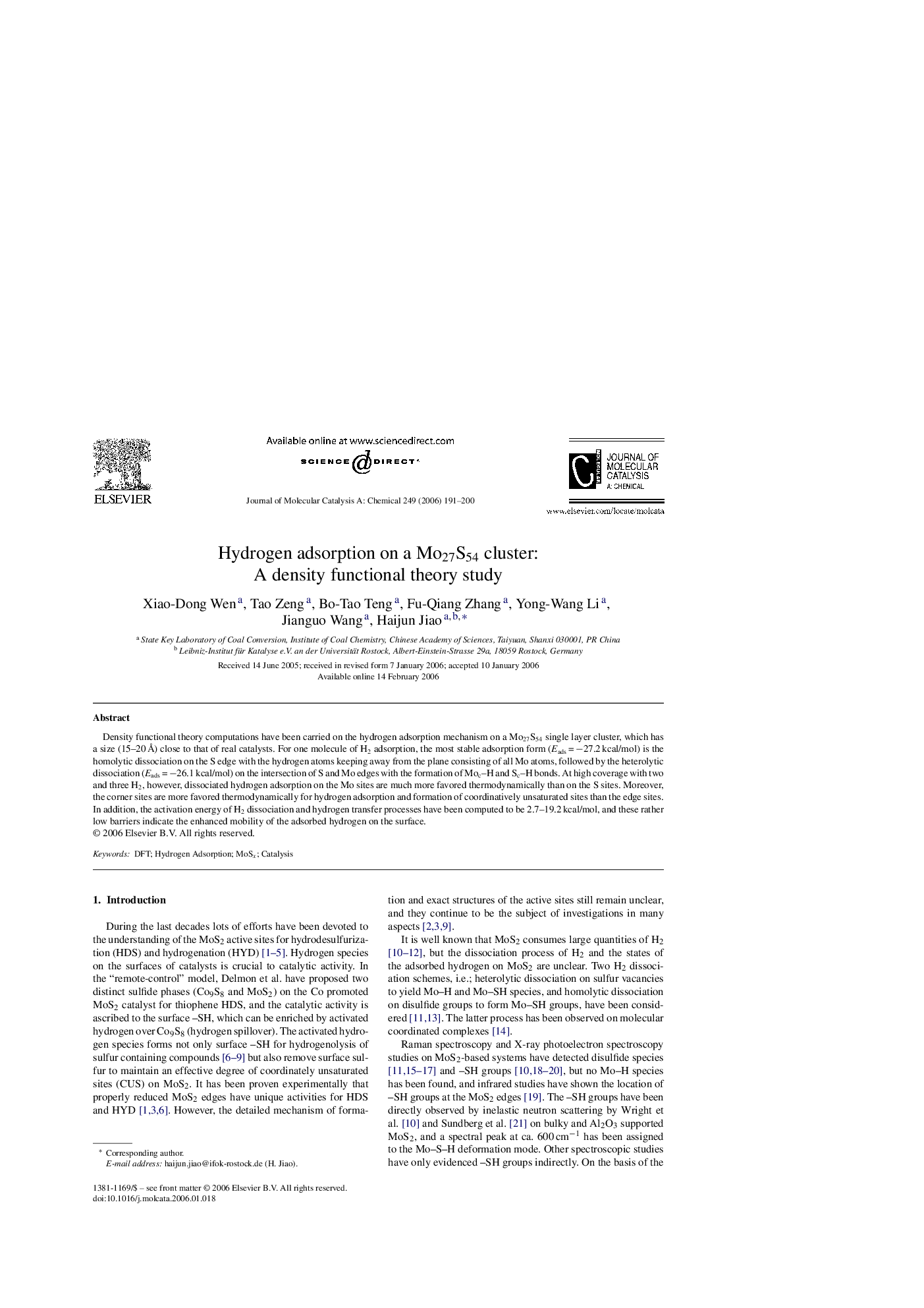| Article ID | Journal | Published Year | Pages | File Type |
|---|---|---|---|---|
| 69027 | Journal of Molecular Catalysis A: Chemical | 2006 | 10 Pages |
Density functional theory computations have been carried on the hydrogen adsorption mechanism on a Mo27S54 single layer cluster, which has a size (15–20 Å) close to that of real catalysts. For one molecule of H2 adsorption, the most stable adsorption form (Eads = −27.2 kcal/mol) is the homolytic dissociation on the S edge with the hydrogen atoms keeping away from the plane consisting of all Mo atoms, followed by the heterolytic dissociation (Eads = −26.1 kcal/mol) on the intersection of S and Mo edges with the formation of Moc–H and Sc–H bonds. At high coverage with two and three H2, however, dissociated hydrogen adsorption on the Mo sites are much more favored thermodynamically than on the S sites. Moreover, the corner sites are more favored thermodynamically for hydrogen adsorption and formation of coordinatively unsaturated sites than the edge sites. In addition, the activation energy of H2 dissociation and hydrogen transfer processes have been computed to be 2.7–19.2 kcal/mol, and these rather low barriers indicate the enhanced mobility of the adsorbed hydrogen on the surface.
Graphical abstractThe intersection of sulfur and molybdenum edges with the formation of Mo–H and S–H bonds represents the most stable adsorption form of heterolytic hydrogen dissociation. Figure optionsDownload full-size imageDownload as PowerPoint slide
